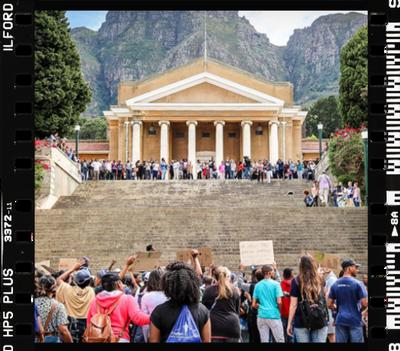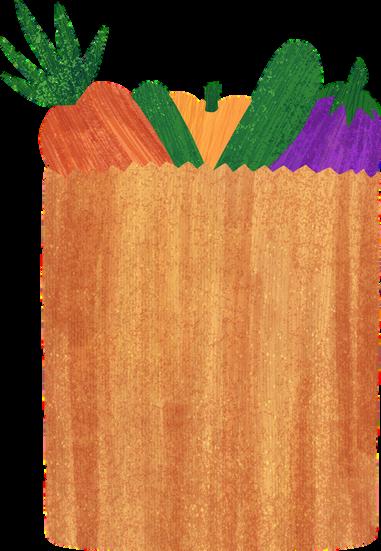
7 minute read
The July 2020 unrest: A Year On Opinion by

Jered Shorkend
Advertisement
A year ago, I hazarded a necropolitical analysis of the July 2021 unrest. I sought to show that the necropolitical heuristic would foreground perspectives, and avail conclusions, that otherwise escaped or featured too weakly in the dominant treatment of the event I concluded that the events of that month implicated something severely deeper than an insurrection attempt by the RET faction of the ruling party and that, in all likelihood, we will see this sort of instability again and soon. This quarter’s edition of Altum Sonatur, entitled ‘Disruption’, presents an opportunity to evaluate this analysis with the benefit of a year of hindsight. For this article’s purposes, this hindsight comprises the release of the South African Human Rights Commission’s preliminary reflective report on the event; and of President Ramaphosa’s Expert Panel report on the same. Below I summarise my arguments at the time and consider them alongside selected parts of the reports.
I opened with a summary of Necropolitics Necropolitics was hazarded by historian and theorist Achille Mbembe in his 2003 essay and 2019 book of the same name It regards social relations in terms of the exercise of power to ‘subject life to the power of death'
It is a spectral exercise that, in addition to life and death, allows for the creation of unique social spaces between the two. Examples of these ‘death worlds’, as Mbembe calls them, include colonial plantations and Nazi concentration camps. These spaces engender 'unique forms of social existence in which vast populations are subjugated to conditions of life conferring upon them the status of living-dead ' They compel life at its ‘outer edge’ where ‘living means continually standing up to death … a sort of inversion between life and death, as if life was merely death's medium.' If enslaved persons and camp inmates lived ‘lives mediated by death’ at the respective behest and for the respective benefit of white plantation owners and Nazi officials, then formal apartheid becomes another obvious example. The relationship between the colony and metropole another.
Against Mbembe’s heuristic I quoted some South African inequality statistics. They included a Gini coefficient of 0.63 – 0.69, between four and nine points higher than that of revolutionary France; a true unemployment rate of 42%, nearly twice that of Weimar Germany; and a youth unemployment rate of 63%, more than twice that associated with the Arab Spring I included an excerpt from academic commentator Sizwe Mpofu-Walsh’s Democracy and Delusionthat ‘[t]he radically disproportionate share of South African wealth is still in a small group of mostly white hands Wealth disparities among the white population are also significantly lower [whereas] wealth disparities inside black and coloured communities are high, given that few have seen tremendous wealth while the clear majority languish in landlessness and poverty. Incredibly, 80% of the black population owns no measurable portion of South African wealth ' I cited journalistic work describing life for some of 55.5% of the population living below the upper-bound poverty line. It discussed dehumanising stasis, environments conducive to hazarding petty theft and narcotic use, and death in stampedes for ‘jobs that offer drudgery, exploitation and exhaustion for meagre rewards’. Lastly, I relayed Mpofu-Walsh’s and two other commentators’ observations that the bulk of July’s ‘looters’ targeted subsistence items such as foodstuffs and basic furniture.
Applying fact to theory, my argument was this The causal background of the July unrest ran deeper than the aggregate totality of ruling party factional battles, unemployment, service delivery and the like. It was a Republic has conferred upon 55.5% of its population, to varying degrees, the status of the living dead; that the country celebrated for rejecting the death penalty in S v Makwanyane in 1996 had by 2021 sentenced more than half of its residents to death mediated by life. To run with the analogy of late academic Gloria Evangelina Anzaldúa – who famously described the border between the United States and Mexico as a site '...where the Third World grates against the first and bleeds And before a scab forms it hemorrhages again, the lifeblood of two worlds merging…’ – July’s events represented the grating and bleeding of the tectonic plates of democracy and ‘death world’ that underlay our national project. It was not that insurrectionists leveraged poverty and desperation so much as it was that our necropolitical crisis emerged through the widening cracks in our fragile social geology. And that it will do so again presented with the right crack. I concluded that a serious treatment of the root causes of July’s events entails the centralisation of this necropolitical crisis in our discourse about it.
The first theme – poverty and inequality referred inter alia to what it called ‘mall culture’: ‘It was noted that as much as malls provide much needed employment, they are, however, is extractive in nature as the ownership of profits does not necessarily belong with the residents. Similarly, questions around the rate and nature of employment of people who reside in townships in malls was raised…’. More broadly, it warned that ‘[t]he fight between the “haves” and the “have-nots” will not stop until some sort of bridge in the inequality gap is achieved.’ ‘One participant mentioned that if there were instigators to the unrest then such instigators used poor people as pawns in their chess game ’ . Better social policy and povertyalleviation initiatives were recommended. The second theme – social cohesion – opened with the inertia of the racism and social animosity of apartheid. ‘[P]eople of certain races were barred in certain places during the unrest as they were regarded as ‘looters’. Areas such as Phoenix in KZN resorted to the use of private security bodies to set up roadblocks and to prevent access to the areas. These mechanisms led to violent incidents between largely African people seeking to pass through the area during the looting and community and private security at the time. The events have focused attention on racial tensions between African and Indian communities which continue to attract attention.’ Initiatives for ‘national healing’, ‘spiritual renewal’, and broader dialogue were among the recommended measures.

Having relayed my argument’s skeleton (if you will excuse the pun) as best as I can, I can turn to the two reports. The first is by the South African Human Rights Commission, which held a public imbizo in the immediate aftermath of the unrest. Its goal, broadly, was to establish the unrest’s root causes and corrective steps for the future. It identified several themes: poverty and inequality, poor social cohesion, deficient government leadership, government corruption, an uncoordinated and unprepared national security apparatus, the general erosion of the rule of law, and lockdown fatigue. My focus is the first two
The second report is by President Ramaphosa’s Expert Panel appointed to investigate the matter. It opens ‘The looting, destruction and violence have come and gone, but we found that little has changed in the conditions that led to the unrest, leaving the public worried that there might be similar eruptions of largescale unrest in future. The question, many argue, is not if and whether more unrest and violence will occur, but when it will occur. The fear of many is that not only will a repeat of such violence find ground in the all-too-familiar contexts of negative political contestation, where certain interests take advantage of the levels of poverty, inequality, lack of service delivery and social tensions to advance their cause. There also is a worry that the violence has left behind a sense of uncertainty and vulnerability because of the ineffective response of the security services and an appetite for lawlessness by those who might feel emboldened by the apparent lack of state capacity. This bleak prospect can be avoided if there is a clear understanding of what happened, and better planning and coordination leading to a coherent approach in dealing with the mounting social and political challenges that our society is facing.’ This theme, for the most part, underlay the rest of the report.
The two preceding paragraphs implicate my claims in three ways. The first is the identification of ‘mall culture’ as a contributory factor to the unrest. It buttresses, I submit, the argument that something more structural (and extractivist) is at play than the aggregate totality of unemployment and poor service delivery. That this was not identified as the sole or chief element in the poverty and inequality theme is neither expected nor fatal to the point. Secondly, poor social cohesion is identified as a ‘remnant’ of apartheid worstened by the first theme of poverty and inequality. This linkage of the two themes is welcomed but, I submit, does not go far enough
South Africa’s democracy and death world (to remain with Mbembe’s terminology) have come to intersect in an interesting way: they tug in illogically different directions. Democracy inhabits and dominates the macrosocial. From presidential speeches, to matric history textbooks, to the language of statutes and judgments, (and to substantive reality for a privileged few), South Africa’s is a story of the triumph of democracy, reconciliation, healing, and nation building. The death world inhabits the microsocial and the economic. I have described its contents elsewhere in this article. The intersection of these forces are elsewhere well-studied. For brevity’s sake, beyond commenting that the two reports represent a missed opportunity to highlight this intersection, I shall move on. Thirdly, and lastly, the recognition that a recurrence of the unrest is likely given that its root causes remain unfettered, I submit, buttresses the conclusion that July-style unrest, as a necropolitical crisis, lies in waiting for the appropriate social geological crack. Ruling party factionalism and complacent security apparatuses presented the first. What will present the second is anybody’s guess.
The conclusion that follows is this. The call for an interrogation, from a structural point of view, of the 2021 July unrest and the discourse surrounding it is to be reiterated. Such an interrogation is arguably more appropriate now than a year ago because of the availability of factual reports, such as the two cited above, from which to draw, and against which to measure, theoretical inferences. The call that the starting point for such an analysis be the necropolitical heuristic is, for the same reasons, also reiterated.



